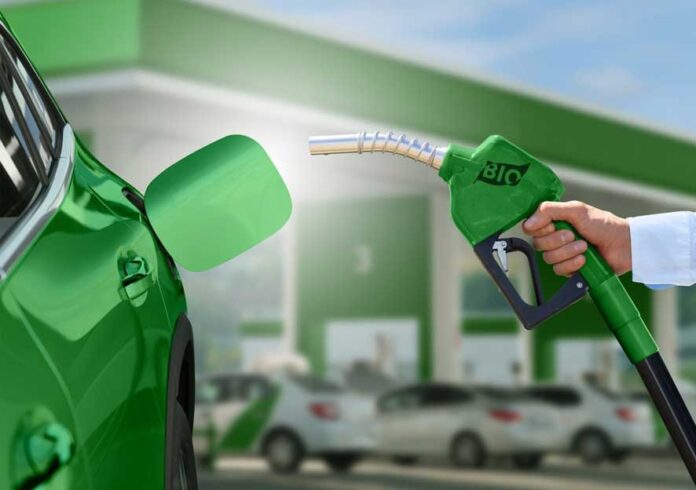
E20 fuel—a blend of 20% ethanol and 80% petrol—has now become the new standard across Indian petrol pumps. This major step towards cleaner, renewable fuel supports India’s goals to cut oil imports, reduce carbon emissions, and strengthen rural economies through ethanol production.
Here’s a detailed look at the benefits, challenges, and long-term impact of India’s transition to E20 fuel.
What is E20 fuel and why it matters
E20 fuel contains 80% petrol and 20% ethanol, doubling the ethanol content from the previous E10 blend (10% ethanol). This change is part of India’s aggressive push towards biofuels and energy independence.
Ethanol, derived from sugarcane, corn, and agricultural residues, is a renewable, cleaner-burning fuel that significantly lowers tailpipe emissions. However, increased ethanol content also raises questions about vehicle compatibility and engine performance, especially for older cars.
E20 Fuel compatibility: Can your vehicle handle it?
All new vehicles sold in India after April 2023 are E20-compatible, meaning their engines and fuel systems are designed to handle the higher ethanol blend.
However, older vehicles (pre-2023 models) may face issues such as:
- Reduced fuel efficiency due to ethanol’s lower energy content.
- Corrosion or wear in engine parts and fuel lines, as ethanol can be more corrosive.
- Inconsistent performance over time, especially if driven regularly on E20 fuel.
Tip: Using E20 fuel occasionally in older cars won’t cause immediate damage, but prolonged use can affect long-term engine health. Check your vehicle manual or consult your manufacturer for E20 compatibility.
E20 Fuel Policy and Rollout in India
India’s ethanol blending journey began with E5 in 2003, moving to E10 by 2022. The target for E20 fuel was originally set for 2030, but the government fast-tracked the rollout to meet its clean energy goals under the National Bio-Energy Policy and Ethanol Blending Program (EBP).
Ethanol production leaders in India (2023 Data):
- Maharashtra: 2.68 billion litres
- Uttar Pradesh: 2.0 billion litres
- Karnataka: 1.18 billion litres
India is now the 4th largest ethanol producer in the world, but domestic demand has already surpassed production, highlighting the fuel’s growing importance.
Technical challenges of using E20 Fuel
The switch to E20 has required significant adjustments in automotive engineering and infrastructure. Key challenges include:
- Material Compatibility: Ethanol can degrade rubber, plastic, and metal components in non-compatible vehicles.
- Engine Calibration: Ethanol burns differently due to higher oxygen content, requiring ECU recalibration for proper air-fuel ratios.
- Cold Start Issues: Ethanol’s lower volatility can make ignition difficult in colder regions.
- Water Absorption: Being hygroscopic, ethanol attracts moisture, leading to phase separation and corrosion risks.
- Storage & Transport: Ethanol-blended fuels need special storage tanks and pipelines to prevent contamination.
Environmental benefits of E20 Fuel in India
E20 fuel offers several environmental advantages aligned with India’s Net Zero and sustainability goals:
- Up to 10% reduction in carbon emissions vs. regular petrol
- Cleaner combustion with fewer pollutants and particulates
- Biodegradable and less toxic than conventional fuels
- Circular economy support by using agricultural waste
- Sustainable production from renewable crop-based sources
- Balanced carbon cycle, as plants absorb CO₂ during growth
India’s 160 million metric tons of surplus agricultural residue can potentially be converted into ethanol, reducing both waste and emissions.
Economic impact of E20 Fuel in India
The adoption of E20 fuel carries significant economic benefits:
- Saves ₹30,000 crore annually in crude oil imports.
- Boosts rural employment through ethanol production, logistics, and distilleries.
- Empowers farmers by creating steady demand for sugarcane, maize, and grain residues.
- Potential cost stability for consumers as domestic ethanol production scales up.
Overall, E20 strengthens India’s energy security and contributes to rural economic growth.
E20 Fuel: The road ahead
The Automotive Research Association of India (ARAI) reports that E20 fuel results in only a 1–6% drop in fuel efficiency, with no major wear and tear over extended use in compatible vehicles.
For Vehicle Owners:
- Check your car’s E20 compatibility before refuelling.
- Monitor performance and mileage after switching to E20.
- Review your car insurance policy to ensure coverage for potential fuel-related issues.
Conclusion: E20 Fuel as India’s Green Energy Revolution
E20 fuel represents a transformative leap toward a cleaner, self-reliant India. Despite minor challenges in engine adaptation and infrastructure, the long-term environmental, economic, and energy security benefits make this transition worthwhile.
As India accelerates its biofuel mission, E20 is set to play a central role in building a sustainable, low-carbon future for millions of drivers and the nation as a whole







